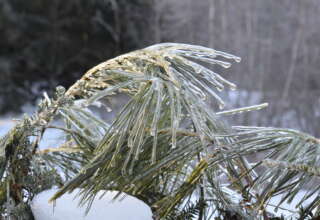
While I want to comment on the ratings receiving from the Pathways to Sleep survey and from review of specific Pathway products (with regard to expert ratings, cost and access), I also want to introduce additional perspectives regarding the experience of creating optimal conditions for sleep. I have organized this presentation regarding the sleep environment around four pathway clusters: (1) preparation, partner and paradox, (2) sights and sounds, (3) bed and beyond, and (4) breath and position. I explore the first two in this essay and the third and fourth cluster in the next essay I will be publishing.
Cluster One: Preparation, Partner and Paradox
We have completed our preparation for sleep (second set of pathways), hopefully complementing a healthy life style (first set of pathways) –even under challenging conditions, such as jet lag. We are now ready to prepare the environment in which we will seek a high-quality night of sleep.
Preparation of Environment
Some environmental conditions remain pretty much the same regardless of the state of the world from which we are “escaping” when seeking to establish an environment in our bedroom (or elsewhere) that is conducive to high-quality sleep. Most of us are fortunate to have a roof over our head that shelters us from inclement weather and a heater and/or air cooler that help regulate the temperature in our home. Other environmental conditions do influence the way we prepare our bedroom for sleep. For instance, if we want to keep our bedroom window open, then we will have to adjust our bed for heat or cold. Similarly, if we are sleeping with another person we might have to deal with a warm body or relatively cold body sleeping next to us.
Other preparations involve adjusting the temperature of the room to contrast with the temperature of our bed or the temperature outside the bedroom. These temperature differences might be among the most effective (and least expensive) ways in which to stimulate sleep. We need a smidge of cold or heat rather than a pill or slug of booze to bring about sleep. Other ways in which we prepare for sleep are influenced by the presence or absence of our internal “weather conditions.” We may need to introduce some relaxation practices when the “storms” are brewing inside us.
Going to bed in a stressed condition might require that we turn on some quieting music or do some deep breathing exercises. The projection of a starry sky above our bed when we are trying to fall asleep might be beneficial after we have spent a day under cloudy interpersonal skies. We need to be Sleep Scientists who make note of the best environmental conditions for meeting the challenge of difficult, anxiety-filled days that linger in our minds and hearts when we head off for a night of sleep.
Given this role as Sleep Scientist, we can benefit from some findings from not only our Pathways to Sleep survey, but insights coming from other sources. I turn first to the matter of welcoming (or not welcoming) a partner into our bed.
Sleep Partner
The ads for beds that are adjustable regarding temperature, softness and angle of recline all come with the prospect of two people sleep beside one another in harmony. However, is this always the case, even with different temperatures, levels of softness and perhaps amount of recline? Do some people find it difficult if not impossible to sleep with another person—while other people must sleep with their beloved companion (be it a person or a pet). Our sleep survey results indicate that sleep partners are very important –but not for everyone (high variability scores). The bed might be adjustable to different temperatures, but what about the warmth of air in the room or the presence of an open window? What is the Goldilocksian compromise regarding the amount of light or sound in the bedroom? And then there is the matter of snoring!! This is often the deal breaker that drives one of the sleep partners into another bedroom or out on the couch for a better night of sleep.








